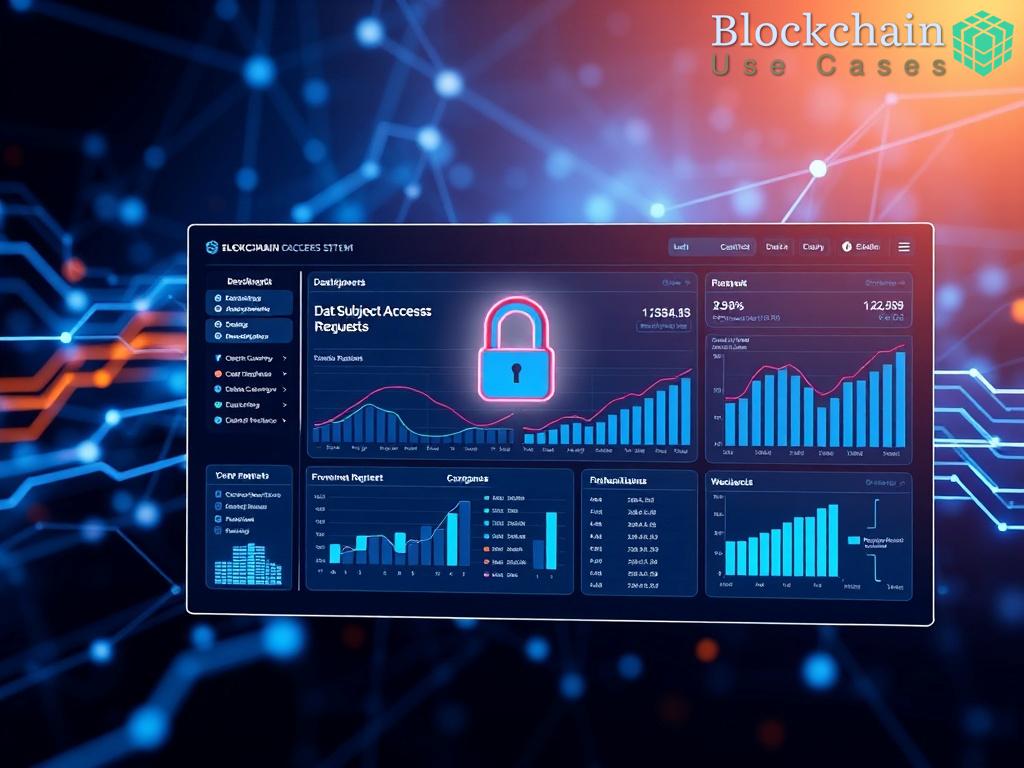Overview of Decentralized Public WiFi Systems
The Evolution of WiFi Management
In an era where connectivity is more critical than ever, traditional methods of managing public WiFi access and usage tracking have struggled to keep up with the growing demands of users. The rise of decentralized systems offers an innovative solution that enhances security, efficiency, and user experience. Utilizing blockchain technology and peer-to-peer networks, these systems provide a robust alternative to centralized WiFi management.
Core Features of Decentralized Public WiFi Solutions
Decentralized public WiFi systems stand out due to their distinct characteristics. Unlike conventional models, which rely on a central authority, decentralized systems distribute control among users, fostering a collaborative environment. This unique approach not only increases transparency but also reduces the risk of data breaches and unauthorized access.
- Enhanced Security: Data is encrypted and stored across multiple nodes, making it less vulnerable to attacks.
- Improved Accessibility: Users can seamlessly access networks without the need for cumbersome login processes.
- Usage Tracking: Real-time analytics provide insights into user behavior while maintaining privacy.
- Community Participation: Network owners can incentivize users to contribute bandwidth, creating a more resilient system.
Decentralized Systems vs. Centralized Systems: A Comparative Analysis
When examining the differences between decentralized and centralized public WiFi systems, the advantages of decentralization become apparent. The table below highlights key comparisons:
| Aspect | Decentralized Systems | Centralized Systems |
|---|---|---|
| Control | Distributed among users | Managed by a single entity |
| Data Security | Higher due to encryption | Potentially vulnerable to attacks |
| User Privacy | Enhanced privacy protections | Centralized data storage |
| Scalability | Easily scalable with community involvement | Limited by central infrastructure |
The shift towards decentralized public WiFi systems is not merely a trend but a necessary evolution in response to the increasing demands for security, privacy, and user empowerment. As more communities explore these innovative solutions, the future of public connectivity looks promising.
Blockchain Technology in WiFi Access Management
As the demand for secure and efficient public WiFi escalates, blockchain technology emerges as a transformative force in managing access and tracking usage. This innovative approach not only enhances security but also empowers users by ensuring transparency and accountability within the network. By leveraging the unique attributes of blockchain, decentralized public WiFi systems are redefining how we connect and interact with digital environments.
Revolutionizing Authentication and Access Control
One of the most significant challenges in public WiFi management is ensuring that only authorized users gain access while safeguarding their personal information. Blockchain technology offers a decentralized authentication mechanism that eliminates the need for central servers, effectively minimizing the risks associated with data breaches. Each user’s identity can be securely stored on the blockchain, allowing for seamless and instantaneous verification without compromising privacy.
Data Integrity and Usage Analytics
In addition to authentication, blockchain enhances the integrity of usage data collected from public WiFi networks. Traditional systems often face challenges with data tampering, leading to inaccurate analytics and unreliable insights. By recording usage transactions on a blockchain, every piece of data is immutable and transparent, providing network operators with real-time analytics that are both accurate and trustworthy. This level of integrity ensures that user behavior can be tracked while maintaining strong privacy protections.
Furthermore, the decentralized nature of blockchain allows communities to collectively participate in network management. Users can opt-in to share their data in exchange for rewards, fostering a sense of ownership and responsibility among participants. This collaboration not only enhances the user experience but also contributes to the overall resilience of the network.
| Feature | Blockchain-Based Systems | Traditional Systems |
|---|---|---|
| Access Control | Decentralized, user-driven | Centralized, authority-driven |
| Data Security | Immutable and encrypted | Vulnerable to breaches |
| User Privacy | Enhanced through anonymity | Limited due to centralized storage |
| Analytics | Real-time and transparent | Potentially inaccurate |
In conclusion, the integration of blockchain technology into public WiFi systems offers a promising trajectory towards a more secure, user-centric, and efficient network environment. As communities continue to embrace these innovative solutions, the landscape of public connectivity is poised for a significant transformation.
User Privacy and Data Security in Public WiFi Networks
In today’s interconnected world, the significance of user privacy and data security within public WiFi networks cannot be overstated. As users increasingly rely on public connectivity for essential activities, ensuring that their personal information remains protected has become a paramount concern. Traditional public WiFi systems often fall short in safeguarding user data, exposing individuals to various risks such as data breaches, identity theft, and unauthorized surveillance. The evolution towards decentralized systems presents a viable solution, leveraging advanced technologies to foster a more secure and private online experience.
Decentralized public WiFi systems revolutionize the landscape of user privacy by implementing robust security protocols that prioritize individual rights. Unlike centralized models where data is stored in a singular location, decentralized networks distribute data across multiple nodes. This architecture significantly reduces the likelihood of data breaches since compromising a single node does not grant access to the entire dataset. Furthermore, the incorporation of blockchain technology ensures that user identities are encrypted and anonymized, diminishing the risk of unauthorized access and enhancing overall privacy.
Moreover, the transparency inherent in decentralized systems empowers users by allowing them to control their data. Participants can choose what information to share and with whom, effectively reclaiming agency over their digital footprints. This model not only cultivates trust among users but also encourages a community-oriented approach to network management. As users contribute their bandwidth, they are rewarded with tokens or incentives, fostering a collaborative environment where privacy is respected and maintained.
Another critical aspect of decentralized public WiFi networks is their capability to offer real-time analytics while safeguarding user information. Traditional systems often struggle with data integrity, leading to inaccuracies and potential misuse of information. In contrast, decentralized networks record usage data on a blockchain, creating an immutable ledger that is both secure and transparent. This means that network operators can access reliable usage statistics without compromising user privacy. By ensuring that sensitive data remains protected, decentralized systems facilitate a trustworthy environment where users can engage with public WiFi services without fear of exposure.
Incentive Mechanisms for WiFi Usage Tracking
As decentralized public WiFi networks continue to gain traction, the implementation of effective incentive mechanisms plays a crucial role in enhancing user participation and engagement. This approach not only promotes a sense of community among users but also contributes to the overall stability and reliability of the network. By leveraging innovative incentive structures, these systems can encourage individuals to share their bandwidth while simultaneously offering transparency and security in tracking usage.
One of the most compelling aspects of decentralized WiFi systems is their ability to reward users for contributing resources. Participants who share their internet bandwidth can earn cryptocurrency tokens or other forms of digital rewards, creating a financial incentive that motivates individuals to engage actively with the network. This model not only benefits the network by increasing available bandwidth but also empowers users to monetize their contributions, transforming digital connectivity into a viable source of income.
Furthermore, the integration of smart contracts within these decentralized systems facilitates automated reward distribution based on predefined criteria. For instance, participants could receive tokens proportional to the amount of bandwidth they contribute or the duration of their active connection. This level of automation ensures that the reward system is fair and transparent, fostering trust and encouraging ongoing participation. Users are more likely to remain engaged when they can see the direct impact of their contributions reflected in tangible rewards.
Moreover, the transparency offered by blockchain technology enhances the credibility of the incentive mechanisms. Every transaction related to bandwidth sharing and reward distribution is recorded on the blockchain, ensuring that all actions are verifiable and tamper-proof. This not only enhances user confidence in the system but also mitigates the risks associated with potential fraud or manipulation often seen in traditional centralized systems. As users feel more secure in their engagement, they are likely to contribute more actively, enriching the entire network.
In summary, the development of robust incentive mechanisms within decentralized public WiFi networks represents a transformative shift in how users interact with public connectivity. By rewarding participants for their contributions and ensuring transparency through blockchain technology, these systems are redefining the landscape of public WiFi. As communities embrace these innovative solutions, the future of public connectivity will be marked by enhanced collaboration, security, and user empowerment.
Challenges and Solutions in Decentralized WiFi Deployment
The transition to decentralized public WiFi systems presents a remarkable opportunity to enhance connectivity while prioritizing user privacy and security. However, this evolution is not without its hurdles. Addressing these challenges is crucial to ensure that decentralized systems function effectively and deliver on their promises. By identifying obstacles and proposing viable solutions, communities can harness the full potential of decentralized WiFi networks.
Technical Complexities and Network Reliability
One of the primary challenges in deploying decentralized WiFi networks is the inherent technical complexity involved in establishing and maintaining such systems. Unlike traditional models that rely on centralized infrastructure, decentralized networks require users to connect and interact with multiple nodes. This can lead to potential inconsistencies in network reliability, particularly if nodes experience downtime or connectivity issues. To combat this, a robust framework for network resilience must be developed. Implementing automated redundancy protocols and utilizing mesh networking technologies can significantly enhance reliability. These measures ensure that if one node fails, others can seamlessly take over, thereby maintaining uninterrupted service for users.
User Adoption and Engagement Strategies
Even with a solid technical foundation, the success of decentralized WiFi systems hinges on user adoption. Educating potential users about the benefits and functionalities of these networks is essential. Many individuals remain unaware of how decentralized systems can enhance their online experience. Engaging community leaders and influencers to advocate for the benefits of decentralized WiFi can foster trust and enthusiasm. Furthermore, incorporating intuitive user interfaces and straightforward onboarding processes will encourage user participation. By providing clear incentives for sharing bandwidth, such as cryptocurrency rewards or access to premium services, networks can effectively motivate users to embrace this innovative model.
In summary, while the deployment of decentralized public WiFi systems presents certain challenges, these hurdles can be overcome through technical innovation and community engagement. By addressing technical complexities and fostering user adoption, decentralized networks can thrive, transforming public connectivity into a secure, efficient, and user-centric experience.

















